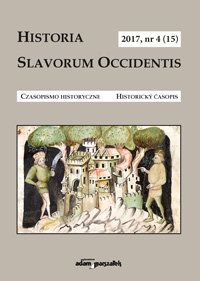Solus cum Deo solo. Rehoľa pavlínov v stredovekom Uhorsku
Solus cum Deo solo. Pauline Fathers in Medieval Hungary
Author(s): Miriam HlavačkováContributor(s): Patrik Kunec (Translator)
Subject(s): Christian Theology and Religion, History, Middle Ages, Theology and Religion, 13th to 14th Centuries, 15th Century, History of Religion
Published by: Wydawnictwo Adam Marszałek
Keywords: Pauline Fathers;Monasteries;The Kingdom of Hungary;Matthias Corvinus
Summary/Abstract: The Order of Saint Paul the First Hermit (Ordo Fratrum Eremitarum Sancti Pauli Primi Eremitae) was following the spiritual lifestyle of the „first hermit”, Saint Paul of Thebes († 342). The formation of this order started in the first half of the 13th century, when hermits started to live in hermitages in the Patach Mountains in the Diocese of Pécs and in the Pilis Mountains in the south-east of Esztergom, following the example of the Old-Christian hermits in the deserts of Egypt. Blessed Eusebius of Esztergom († 1270) united the hermits who were scattered in caves and around 1250 they built the Holy Cross Monastery close to what is today Kesztölc-Klastrompuszta. Approvals granted by a legate of the Pope, Cardinal Gentilis of Montefiore, were an important step in the process of the formation of this new Order of Pauline Fathers, allowing them to follow the rule of Saint Augustine and create their own constitution. The centre of this monastic society and the seat of the General Priory was the monastery connected to the St. Lawrence Church in Buda. The contemplative nature of the order was clearly implied by their motto Solus cum Deo solo, and the religious practices of the monks included meditation near the relics of saints, the recitation of numerous prayers for the dead and the intensive worship of Mary. The order thrived in the 14th century: while 22 Pauline monasteries were built during the 40 year reign of Louis the Great (1342–1382), 16 monasteries were founded in 70 years plus that followed (1382–1458). The defeat of Hungarian troops at Mohács (1526) did great damage to the order. However, Turkish ravages were not the only cause of the dissolution of the monasteries at that time. The rapidly-spreading ideas of reformation also drew the attention of important Hungarian noblemen; even though they were the descendants of the founders of the monasteries, they converted to Protestantism and appropriated the possessions of the church in their territories.
Journal: Historia Slavorum Occidentis
- Issue Year: 2017
- Issue No: 4
- Page Range: 36-55
- Page Count: 20
- Language: Slovak

